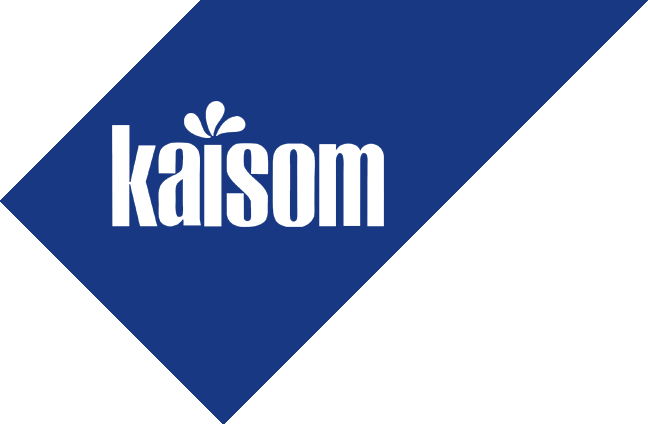How Visual Cues Enhance User Accessibility and Engagement
In the rapidly evolving landscape of digital interfaces, visual cues serve as essential tools that bridge the gap between complex information and user comprehension. These visual signals—ranging from color and shape to motion—are fundamental in making digital environments more accessible and engaging for diverse audiences. Recognizing their importance is crucial for designers aiming to create inclusive, intuitive, and captivating user experiences.
Table of Contents
- Fundamental Principles of Visual Cues in Accessibility
- Types of Visual Cues and Their Psychological Impact
- Enhancing User Engagement Through Visual Cues
- Designing Effective Visual Cues: Best Practices and Common Pitfalls
- Accessibility Features and Visual Cues in Modern Products
- Case Example: “Fortune Coins – Hit the Cash!” as a Modern Illustration
- The Future of Visual Cues in User Accessibility and Engagement
- Conclusion: Integrating Visual Cues for Inclusive and Engaging User Experiences
Fundamental Principles of Visual Cues in Accessibility
Effective visual cues align with established accessibility standards such as the Web Content Accessibility Guidelines (WCAG) 2.1 AAA level. These standards emphasize high contrast between foreground and background colors, clear labeling, and distinguishable visual signals to accommodate users with visual impairments, including color blindness. For example, using color alone to indicate an error is insufficient; combining color with shapes or icons ensures that all users can identify critical cues regardless of sensory limitations.
Consistency and intuitiveness are key in designing visual signals. When users encounter familiar cues—such as a green checkmark indicating success—they can quickly interpret their meaning without confusion. This universality reduces cognitive load and enhances overall accessibility. Digital interfaces that employ predictable visual cues—like red for errors or warnings—support users with diverse needs and improve usability across populations.
Examples include:
- Color contrast adjustments for readability
- Accessible labels and icons
- Consistent placement of navigation cues
Types of Visual Cues and Their Psychological Impact
Color and Contrast
Colors guide attention and communicate status instantly. Bright, contrasting colors draw the eye to important elements, such as notifications or actionable buttons. For example, a vibrant red alert signals urgency, while soothing blue indicates informational messages. Psychological studies confirm that color influences mood and behavior, making its strategic use vital for engagement and accessibility.
Shapes, Icons, and Symbols
Universal understanding is supported by familiar shapes and icons. A magnifying glass universally signifies search, while a trash bin indicates delete. These symbols reduce language barriers and allow for quick recognition, essential for users with cognitive impairments or limited literacy. Clear, simple icons enhance navigability and reduce user frustration.
Motion and Animation
Subtle motion—such as flashing or animated highlights—can emphasize updates or alerts without overwhelming the user. For instance, animated coins or flashing borders can draw attention to essential game features, as seen in modern interactive entertainment. Proper use of motion supports user focus and conveys dynamic information effectively, aligning with accessibility by avoiding rapid or distracting movements.
Enhancing User Engagement Through Visual Cues
Visual cues serve as navigational aids, helping users progress smoothly through interfaces. Clear indicators like arrows, highlights, or animated signals reduce confusion and facilitate intuitive flow. For example, animated indicators in a game guide players toward active features, increasing engagement and reducing frustration.
Feedback mechanisms—such as color changes, sounds, or animations—reinforce user actions. When a player spins a slot and sees coins flashing or a winning animation, it affirms their decision and boosts motivation. These visual reinforcements are crucial in maintaining user interest and trust.
A practical illustration can be seen in the new slot from TaDa, where visual cues like flashing coins and animated game rules actively engage players, making the experience more immersive and satisfying.
Designing Effective Visual Cues: Best Practices and Common Pitfalls
Striking a balance between prominence and subtlety is essential to prevent visual overload. Overly flashy cues can distract or confuse users, while too subtle signals may be overlooked. Consistent use of cues across the interface ensures familiarity, reducing cognitive effort.
Accessibility considerations include ensuring cues are perceivable by users with visual impairments. For instance, color-blind users benefit from cues that combine color with shapes or text labels. Testing with diverse user groups helps identify and address potential shortcomings, leading to more inclusive designs.
Common pitfalls include relying solely on color or motion without alternative signals, which can exclude users with impairments. Regular usability testing and adherence to established standards can mitigate these issues.
Accessibility Features and Visual Cues in Modern Products
Modern digital products incorporate settings like sound, autoplay, turbo modes, and detailed game rules access to complement visual cues. These features empower users to customize their experience, enhancing accessibility. For example, enabling audio descriptions or subtitles can assist users with visual impairments, while clear labeling of game functions fosters transparency and trust.
Handling malfunctions—such as voiding pays or plays—requires clear visual communication to prevent user confusion. Visual indicators like flashing warnings or status messages ensure that users understand system states quickly, fostering confidence and reducing frustration.
Supporting documentation and labeling further aid user understanding, especially in complex interfaces or games. Properly annotated cues and accessible instructions build trust and promote a positive experience.
Case Example: “Fortune Coins – Hit the Cash!” as a Modern Illustration
This contemporary digital game exemplifies how effective visual cues adhere to accessibility standards while boosting engagement. It employs brightly colored, high-contrast coins that flash and animate to attract players’ attention, creating a lively and inviting atmosphere. Game rules are presented with animated icons and tooltips that activate during gameplay, ensuring clarity without overwhelming users.
Specific examples include flashing coins that indicate winning combinations, animated arrows guiding players to spin buttons, and status messages displayed with contrasting colors to confirm actions. These cues are designed to be perceivable by users with different abilities, illustrating the importance of inclusive design in entertainment products.
Lessons from this example include integrating visual cues seamlessly into gameplay, maintaining clarity under fast-paced conditions, and testing with diverse user groups to refine cue effectiveness. Such practices can be adapted across various digital interfaces to foster both accessibility and engagement.
The Future of Visual Cues in User Accessibility and Engagement
Emerging technologies like artificial intelligence (AI), augmented reality (AR), and virtual reality (VR) hold the promise of creating more personalized and context-aware visual cues. AI can adapt signals based on user behavior, ensuring cues are relevant and unobtrusive. AR and VR enable immersive experiences where visual cues can be spatially mapped and dynamically adjusted, enhancing accessibility for users with disabilities.
Trends in inclusive design emphasize customization, allowing users to select preferred types of cues—such as visual, auditory, or haptic feedback—tailored to their needs. This individualization fosters a more inclusive digital environment, bridging accessibility gaps and increasing engagement across diverse populations.
Ongoing innovations are expected to make interfaces more intuitive and inclusive, ultimately leading to universally accessible digital ecosystems that support seamless interaction for everyone.
Conclusion: Integrating Visual Cues for Inclusive and Engaging User Experiences
In summary, visual cues are fundamental in crafting digital interfaces that are both accessible and engaging. They help users interpret information quickly, navigate smoothly, and feel motivated to interact—regardless of physical or cognitive abilities. Effective design requires adherence to standards, thoughtful use of colors, shapes, and motion, and continuous testing to refine cues based on user feedback.
As technology advances, the potential for innovative visual cues expands, promising even more inclusive and captivating user experiences. Incorporating these principles into your design process will ensure that digital environments remain welcoming, intuitive, and universally accessible for all users.
“The best user interfaces are those that communicate effortlessly, making accessibility an integral part of engagement.”





